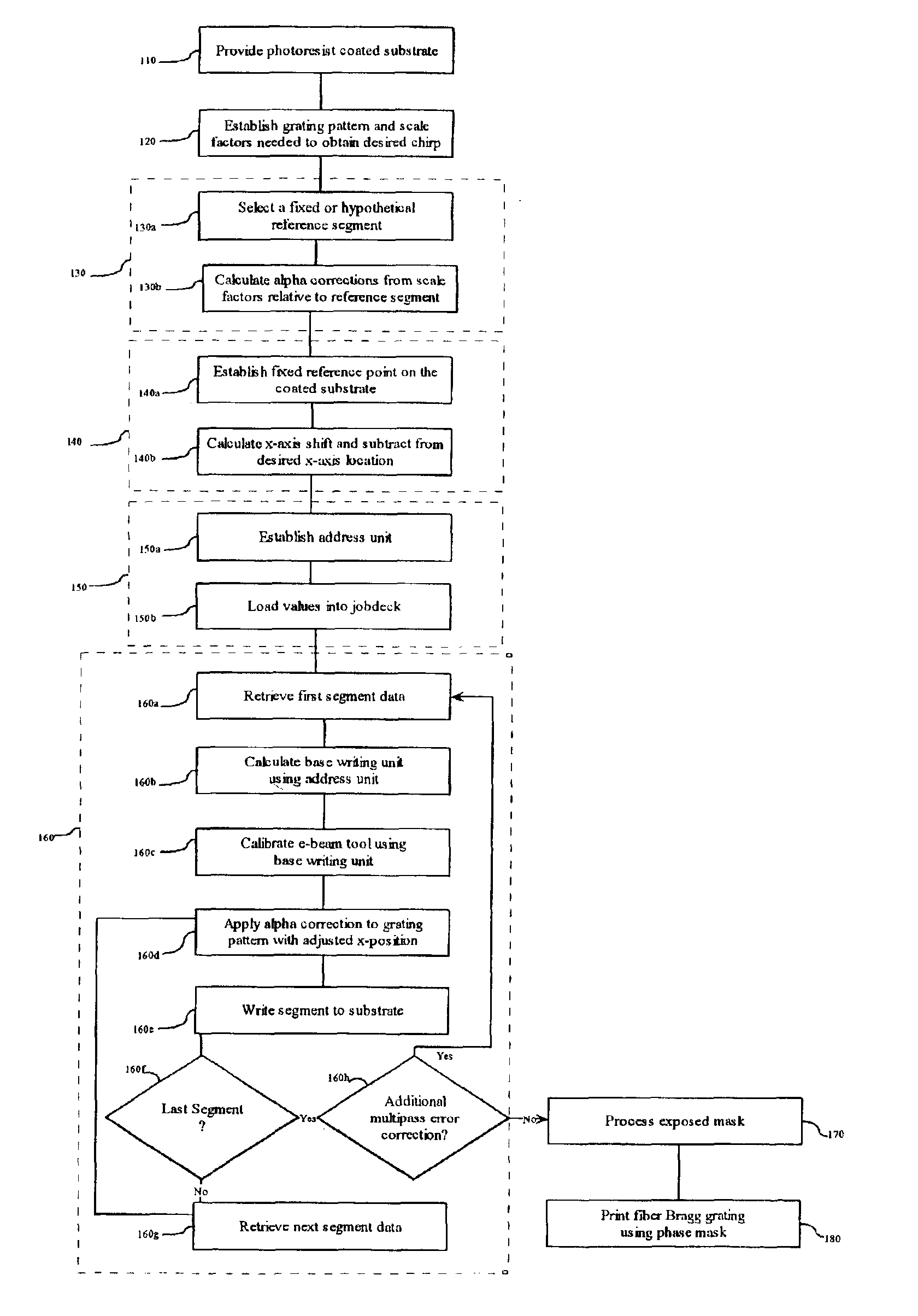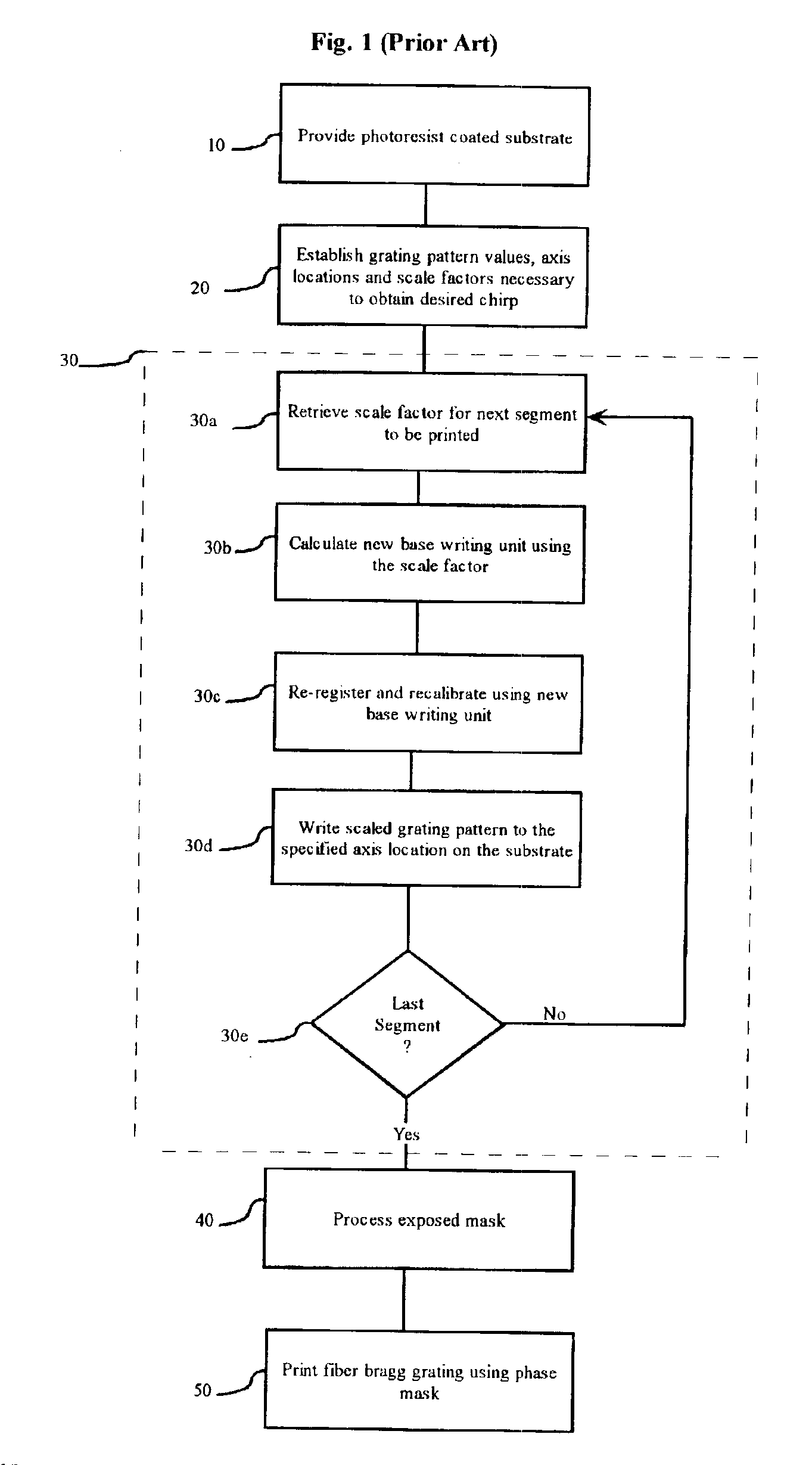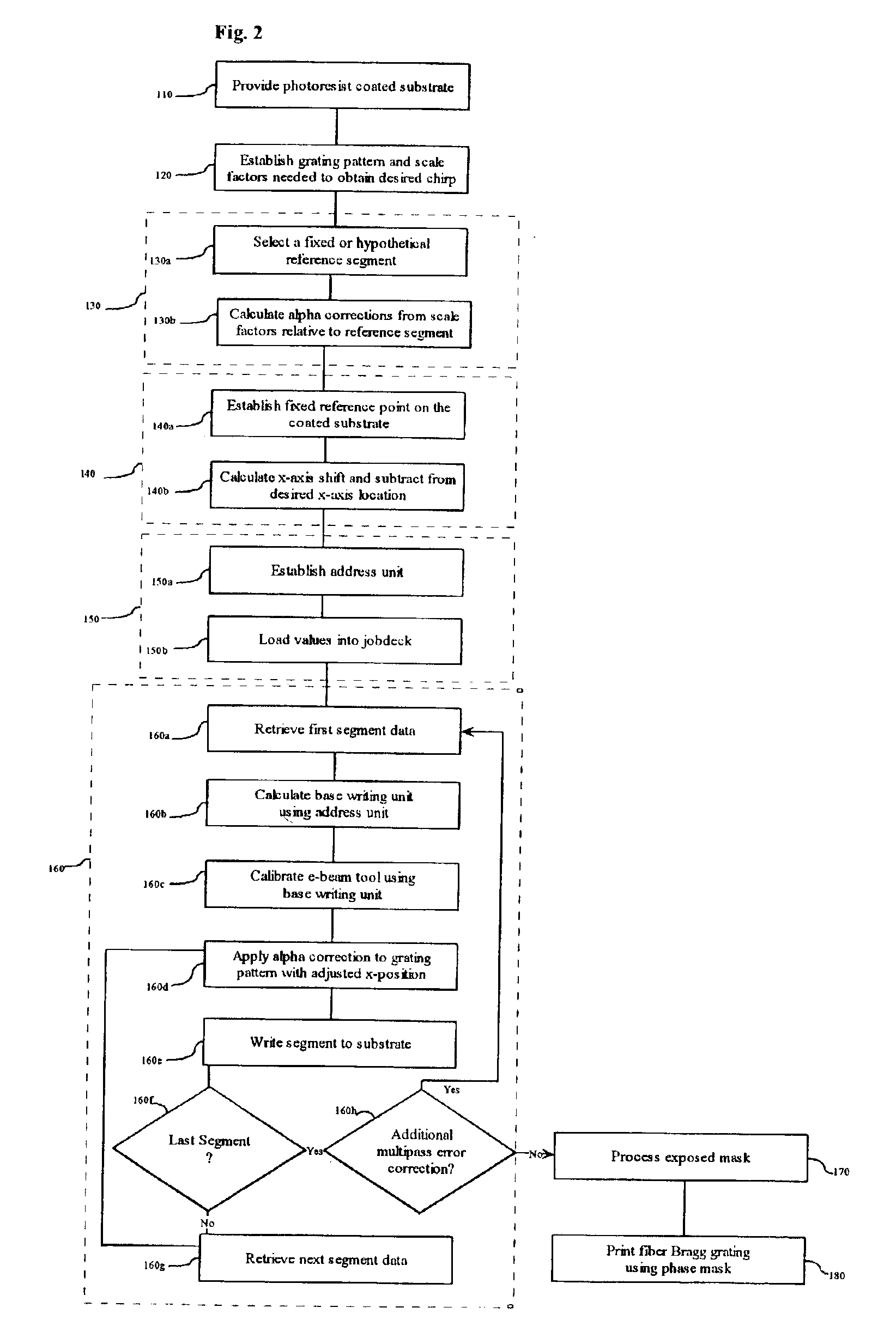Method for fabricating chirped fiber Bragg gratings
a technology of chirped fiber bragg grating and grating plate, which is applied in the direction of photomechanical equipment, instruments, originals for photomechanical treatment, etc., can solve the problems of inability to achieve the accuracy necessary, difficult and time-consuming fabrication of such gratings, and inability to achieve the effect of accurate stitching in the mask pattern, reducing throughput overhead, and reducing production times
- Summary
- Abstract
- Description
- Claims
- Application Information
AI Technical Summary
Benefits of technology
Problems solved by technology
Method used
Image
Examples
Embodiment Construction
The present invention is generally directed to a method for achieving scale changes for a writing element in a lithography tool. More particularly, the present invention is directed to a method for producing chirped fiber Bragg grading using a lithography tool wherein correction factors, rather than conventional scale factors, are used for achieving scale changes for a writing element. One example of the implementation of the present invention is illustrated in FIG. 2. FIG. 2 is a block diagram illustrating the steps in making a chirped fiber Bragg grating on lithography tool such as the MEBES 4500 e-beam tool or similar lithographic tool using the improved machine control method of the present invention. As in the method of the prior art given in FIG. 1, a photoresist coated substrate is loaded onto the stage of the lithography tool, and an appropriate grating pattern and scale factors are chosen as shown in FIG. 2 at 110 and 120 respectively.
The grating pattern may be a series of ...
PUM
| Property | Measurement | Unit |
|---|---|---|
| length | aaaaa | aaaaa |
| length | aaaaa | aaaaa |
| width | aaaaa | aaaaa |
Abstract
Description
Claims
Application Information
 Login to View More
Login to View More - R&D
- Intellectual Property
- Life Sciences
- Materials
- Tech Scout
- Unparalleled Data Quality
- Higher Quality Content
- 60% Fewer Hallucinations
Browse by: Latest US Patents, China's latest patents, Technical Efficacy Thesaurus, Application Domain, Technology Topic, Popular Technical Reports.
© 2025 PatSnap. All rights reserved.Legal|Privacy policy|Modern Slavery Act Transparency Statement|Sitemap|About US| Contact US: help@patsnap.com



